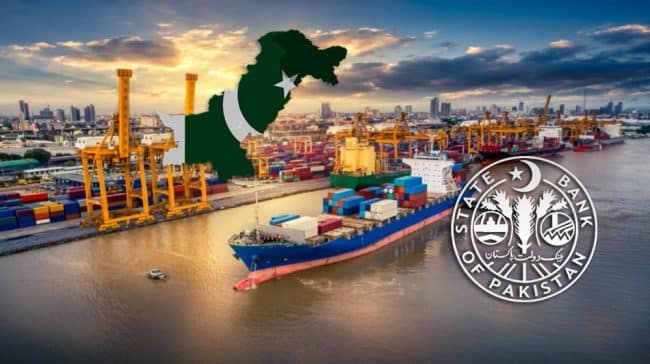The State Bank of Pakistan’s (SBP) 2024 Financial Stability Review, released in April 2025, underscores significant improvements in Pakistan’s macroeconomic environment.
The SBP’s 2024 Financial Stability Review emphasises several key points: declining inflation, stable exchange rates, and a strong recovery in private sector credit. These factors, fiscal consolidation, and an improved external account balance indicate a positive economic outlook for 2024 (CY24).
The banking sector demonstrated strong performance, with a 15.8% balance sheet expansion driven by investments and advances. Private sector advances rebounded significantly, fueled by economic revival, monetary policy easing, and a tax policy linked to the advances-to-deposit ratio (ADR). However, this policy also slowed deposit mobilisation, increasing reliance on borrowings.
The non-performing loans (NPLs) ratio improved to 6.3% in December 2024 from 7.6% the previous year, reflecting manageable credit risk. The capital adequacy ratio rose to 20.6%, well above regulatory requirements.
Islamic banking institutions saw robust growth in assets and branch networks, aligning with SBP’s focus on Shariah-compliant finance. However, microfinance banks (MFBs) continued to face stress, highlighting vulnerabilities in the sector.
The non-bank financial sector showed varied results. Development Finance Institutions (DFIs) experienced a contraction, while Non-Bank Financial Institutions (NBFIs) expanded significantly. The insurance sector maintained steady performance, contributing to overall financial stability.
Digital Transactions and Financial Infrastructure
Financial Market Infrastructures (FMIs) supported system stability through operational resilience. Digital transactions, particularly via the Raast platform, gained momentum after introducing the person-to-merchant module in late 2023. Additionally, an MoU between SBP and the Arab Monetary Fund integrated Raast with Buna, facilitating remittances from the Gulf region.
Despite progress, challenges persist. Rising borrowings, stressed microfinance banks, and global protectionist measures pose risks to sustained growth. The review emphasises the need for structural reforms to build external buffers and mitigate financing risks. Subdued economic activity also impacted the non-financial corporate sector, though liquidity and repayment capacities remained stable.
The SBP’s review highlights the importance of continued reforms to ensure long-term economic stability. While Pakistan’s financial sector remains resilient, global uncertainties and protectionist trends could challenge progress.






